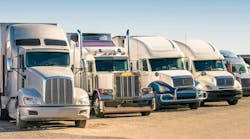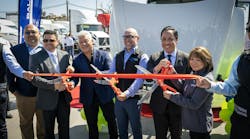Over the past decade, countless fleets have converted to natural gas as a means to reduce fuel costs, emissions of particulate matter, and nitrous oxides. While the North American shale gas boom has led to an attractive price spread between natural gas and diesel, concerns over increased methane emissions from the extraction process (i.e., fracking) have arisen. As the industry works to address these concerns, renewable natural gas (RNG) is emerging as both a promising alternative today and a bridge to a near-zero-emissions fueling solution in the future, challenging naysayers to rethink their position on methane.
RNG, which is derived from a robust supply of renewable sources (organic waste, landfills, wastewater treatment plants, agricultural processes, or even wind and solar power as seen in Europe), offers the transportation industry a vital opportunity to transform waste streams into fuel assets by capturing and recycling methane that would otherwise be released into the atmosphere.
When derived from organic waste, RNG (or biogas) offers a greater degree of greenhouse gas emissions reductions than any other alternative fuel under California’s Low Carbon Fuel Standard, an incentive program now being considered by several other states. In some instances, biogas can actually supply a negative carbon intensity, which means that using the fuel also serves to remove carbon from the atmosphere.
No other commercially available fuel can meet the demands of the trucking sector while also delivering up to a 90% reduction in greenhouse gas emissions, and can accomplish this at a cost below that of diesel or gasoline. As a result, exciting RNG developments are gaining ground in states across the country. A prime example can be seen in California, where 100% of the natural gas that Clean Energy dispenses at its retail fueling network is renewable biomethane from organic waste streams—CR&R, Republic Services, Waste Management, and a number of other fleets are reaping the benefits.
As exciting, countries like Germany are deriving renewable methane from wind and solar. Historically, the lack of reliable and affordable storage for energy generated during “off-peak” hours has been an impediment to increasing renewable power. Natural gas is proving to be a viable storage solution. When electricity captured from wind and solar is run through water, the electric current causes the water molecules to decompose into hydrogen and oxygen. The hydrogen can be captured and either used directly or mixed with carbon dioxide to create methane (CH4), which can then be injected into the extensive natural gas infrastructure to be transported to any end user or stored indefinitely. The hydrogen can be used directly or separated back out from the CH4 anywhere along the pipeline, leading to exciting possibilities for RNG to create a tangible near-zero-emissions hydrogen fueling future.
As you can see, biomethane is an incredible energy resource. Fleets and transportation stakeholders can learn more about this critical energy source at the Rethink Methane Symposium, a first-of-its-kind workshop slated for June 9-10 of this year in Sacramento, CA. The event will explore methane as a solution to our nation’s sustainable energy, environmental protection and economic development goals.
Cliff Gladstein is president of Gladstein, Neandross & Associates (GNA), the clean transportation and energy consulting firm that organizes the Alternative Clean Transportation (ACT) Expo and Rethink Methane Symposium. Learn more at www.gladstein.org, www.actexpo.com, and www.rethinkmethane.org.


